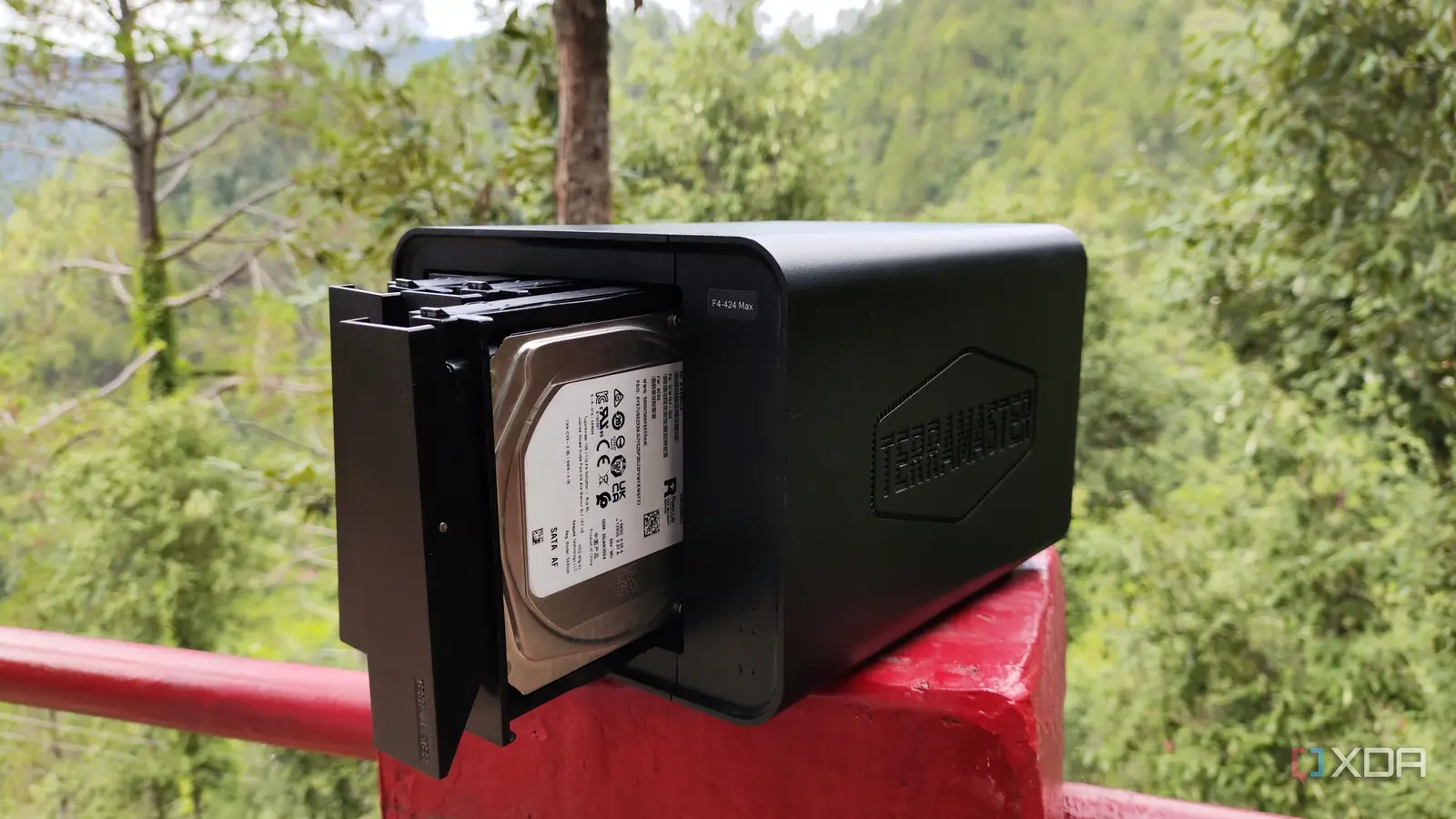
High capacity storage is the main building block of any kind of NAS you may set up in your home, but the per-terabyte cost of high density storage can balloon pretty quickly. SSDs aren’t the first choice for a lot of NAS deployments, so old, reliable spinning platters are still the gold standard for home NAS use, but not all of them are created equal. Out of the two main recording technologies, SMR HDDs are relatively new, but they come with a steep hidden cost.
SMR versus CMR
Why does SMR even exist?
Hard disk drives record data on spinning magnetic platters, and they do so in tracks. As the platter spins, the head writes the data on the disk, and with CMR (Conventional Magnetic Recording), these tracks are written side by side with no overlap. This has been the standard technology for years.
SMR (Shingled Magnetic Recording) is newer, and instead of writing tracks side by side, it “shingles” them like roof tiles, and writes tracks with overlap in order to increase density. SMR exists because of this continual push for higher density storage. CMR can only write so many tracks on each platter, while SMR can overlap them, increasing capacity by up to 25% in some cases.
Why is SMR bad for resilvering?
ZFS is also a nightmare here
Resilvering is the process of rebuilding data and putting it into a replacement drive for your ZFS pool. As the data is reconstructed, it pushes the drive heavily with random writes. These small, scattered operations make what is already a long process into a painstaking one with SMR drives.
Since SMR drives have overlapping tracks, the rewriting of any one track will require the rewriting of adjacent tracks. This penalty compounds many times over when resilvering, and turns what should be a process that takes a few hours and turns it into multiple days, or in really extreme cases, weeks. If you’re using ZFS, it might be worth getting CMR drives instead, as resilvering SMR drives stresses them even more. Using SMR drives with ZFS is just asking for frustration and potential data loss.
Should you use SMR drives in your NAS?
It all depends on what you’re storing
What type of drive you should use in your NAS really depends on what kind of data you plan on storing. For cold storage or backup pools that you’ll seldom need to access, SMR drives are totally fine. If you’re using them as individual disks or for archival use, you also shouldn’t run into any issues. It really only becomes a problem when you use them in RAID or ZFS arrays, where you’re using them in any sort of sustained writing capacity. Resilvering is inevitable in these cases, so I’d avoid SMR drives like the plague there.
If you’re wondering how you can tell whether a drive uses SMR or CMR, the good news is that it’s much easier to tell now than it was even just a few years ago. WD, Seagate, and Toshiba have all been guilty of using SMR in their drives without documenting it for users, and in 2020, WD faced a lot of backlash for using SMR in their “Red” line of drives without properly putting that in the documentation. Most major brands will now list whether their drive uses SMR or CMR in their official documentation, with CMR usually being used in drives with “NAS” branding on them. If you’re having trouble finding out, there are easy to find community-maintained databases that record and save which SKUs use which technology.
Choose what kind of drive you use wisely
I feel like it’s important to reiterate that there isn’t anything inherently wrong with SMR, and there absolutely are valid use cases for drives that use that recording technology. The problems arise when SMR drives are deployed in applications where they stand no chance at all. RAID or ZFS configurations where heavy writes are being done on SMR drives are a recipe for disaster, and can be a huge liability for your entire storage pool.
Saving a few bucks by using SMR drives is appropriate in configurations where you’ll be writing to them once or twice, and then only ever reading off of them after that. For a true, high-performance NAS array, paying the premium price for CMR drives is definitely the move.



